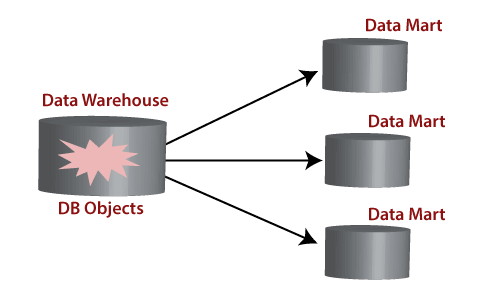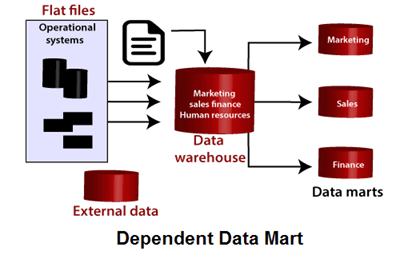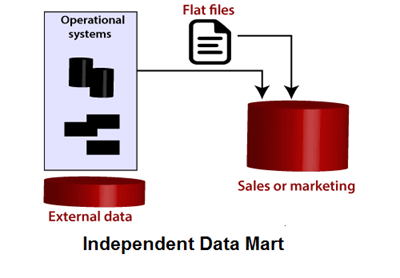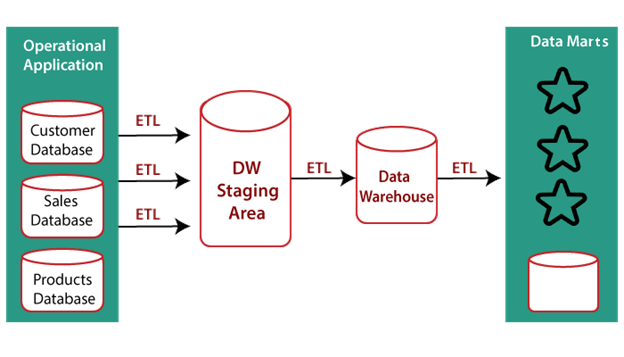What is Data Mart?A Data Mart is a subset of a directorial information store, generally oriented to a specific purpose or primary data subject which may be distributed to provide business needs. Data Marts are analytical record stores designed to focus on particular business functions for a specific community within an organization. Data marts are derived from subsets of data in a data warehouse, though in the bottom-up data warehouse design methodology, the data warehouse is created from the union of organizational data marts. The fundamental use of a data mart is Business Intelligence (BI) applications. BI is used to gather, store, access, and analyze record. It can be used by smaller businesses to utilize the data they have accumulated since it is less expensive than implementing a data warehouse. 
Reasons for creating a data mart
Types of Data MartsThere are mainly two approaches to designing data marts. These approaches are
Dependent Data MartsA dependent data marts is a logical subset of a physical subset of a higher data warehouse. According to this technique, the data marts are treated as the subsets of a data warehouse. In this technique, firstly a data warehouse is created from which further various data marts can be created. These data mart are dependent on the data warehouse and extract the essential record from it. In this technique, as the data warehouse creates the data mart; therefore, there is no need for data mart integration. It is also known as a top-down approach. 
Independent Data MartsThe second approach is Independent data marts (IDM) Here, firstly independent data marts are created, and then a data warehouse is designed using these independent multiple data marts. In this approach, as all the data marts are designed independently; therefore, the integration of data marts is required. It is also termed as a bottom-up approach as the data marts are integrated to develop a data warehouse. 
Other than these two categories, one more type exists that is called "Hybrid Data Marts." Hybrid Data MartsIt allows us to combine input from sources other than a data warehouse. This could be helpful for many situations; especially when Adhoc integrations are needed, such as after a new group or product is added to the organizations. Steps in Implementing a Data MartThe significant steps in implementing a data mart are to design the schema, construct the physical storage, populate the data mart with data from source systems, access it to make informed decisions and manage it over time. So, the steps are: DesigningThe design step is the first in the data mart process. This phase covers all of the functions from initiating the request for a data mart through gathering data about the requirements and developing the logical and physical design of the data mart. It involves the following tasks:
ConstructingThis step contains creating the physical database and logical structures associated with the data mart to provide fast and efficient access to the data. It involves the following tasks:
PopulatingThis step includes all of the tasks related to the getting data from the source, cleaning it up, modifying it to the right format and level of detail, and moving it into the data mart. It involves the following tasks:
AccessingThis step involves putting the data to use: querying the data, analyzing it, creating reports, charts and graphs and publishing them. It involves the following tasks:
ManagingThis step contains managing the data mart over its lifetime. In this step, management functions are performed as:
Difference between Data Warehouse and Data Mart
Next TopicData Warehouse Delivery Process
|
 For Videos Join Our Youtube Channel: Join Now
For Videos Join Our Youtube Channel: Join Now
Feedback
- Send your Feedback to [email protected]
Help Others, Please Share










